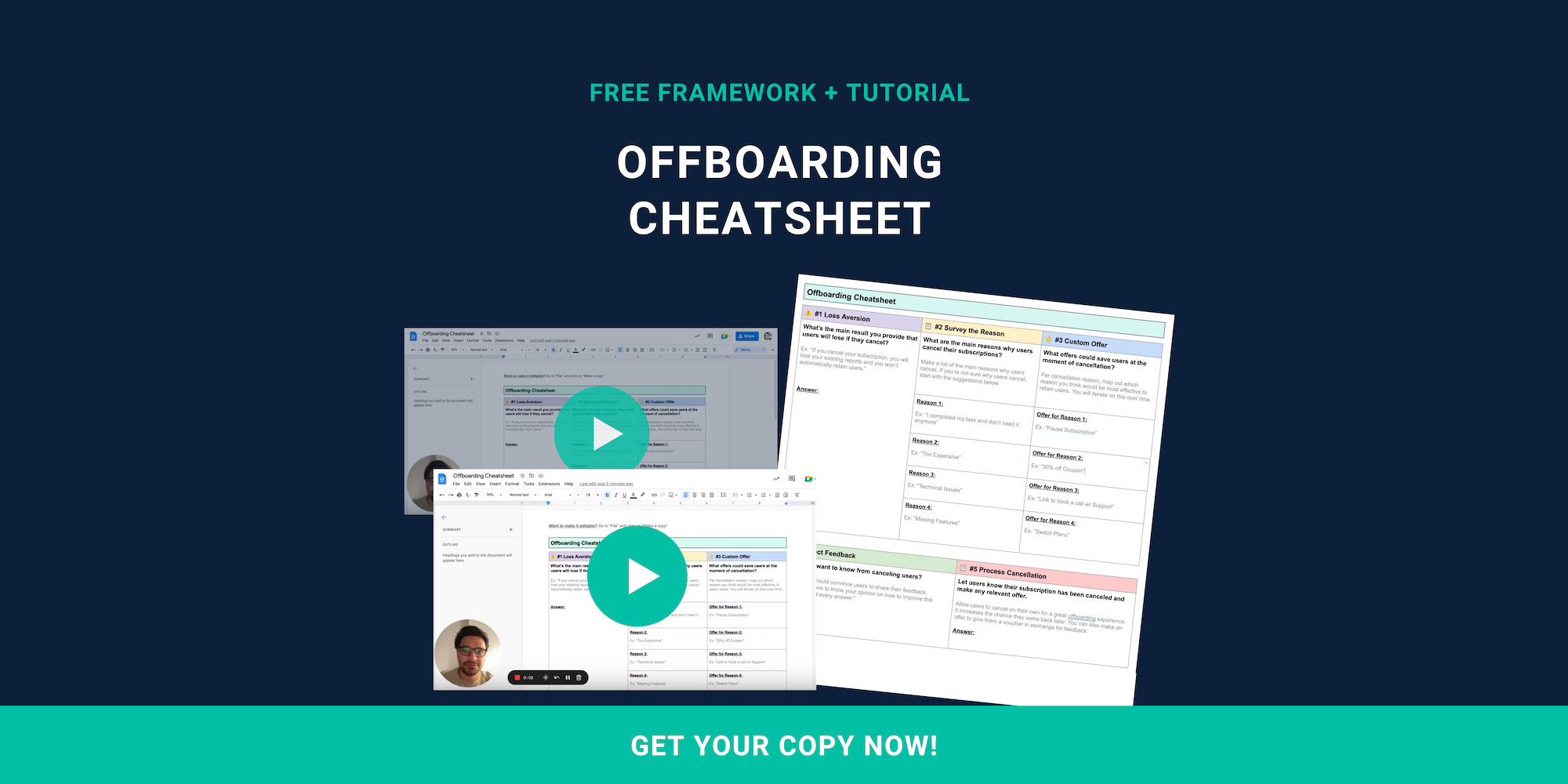Even if you were able to predict customer churn with 100% accuracy, it won’t matter if there’s nothing put in place to prevent it from happening. It’s true that some customers were never the right fit to use your product. Still, there are a number of at-risk customers that are worth winning back. At Raaft, we help SaaS leaders automate their customer churn prevention strategies—specifically win-back campaigns. Win-back campaigns can be adopted by any business model in order to reduce churn of targeted customers.
What are win-back campaigns
A win-back campaign is a series of messages that are sent to customers with the intent of enticing them back into using your product. For SaaS companies that run on a subscription model, it might mean offering a reduced rate, adding more support for value or asking for their feedback. The best win-back campaigns always incorporate two main components:
- Communication that lets the customer know you understand why they want to terminate the business relationship. (ex. The subscription fee is too high for the customer to afford.)
- An enticing offer of value that addresses the reason for termination. (ex. 25%discount for a 1-year subscription renewal)
When taking all these factors into account, churn score gives SaaS leaders indicators of when a customer needs to be immediately connected with. Having these indication points will help you take action immediately, whereas previously, there was delay.
SaaS customer churn FAQs
If you’re like most SaaS leaders, your top priority is to grow the business. But to do that, you not only need to obtain new customers but retain old customers. With companies spending top dollar to acquire new customers, it’s evident that reducing customer churn is much more cost effective. So, with that in mind, we want to address some commonly asked questions SaaS leaders have about churn.
My company is growing but so is churn. What can be done?
The reality is, as your SaaS company grows, churn may also increase relative to when your customer base was smaller. What you need is to replace churned customers with new customers right? Perhaps that’s only half the story. The fact of the matter is, you’re not hoping to replace the number of customers but rather, the amount of customer revenue lost. Churn prevention comes in the form of saving customers and expanding current ones. Let’s say you’ve exhausted all your options when it comes to reducing churn rate. What can be done besides trying to sell to more new customers? Look to your current customer base. These are companies that are already sold on the products and services you provide. In other words, try replacing lost customer revenue by increasing the average customer spend. Many companies will provide offers that nudge customers towards a small upsell regularly. Upselling itself requires great timing and there’s certainly no better time to do so than when customer usage and adoption is high. Remember, you’re not looking to increase the price per unit, but rather asking your current customers if they’d like to purchase more of what they like (and with more benefits).
What type of customer is less likely to churn? How can I keep them from churning?
Simply put, customers that love your product show it by interacting with it and/or your brand frequently. So, before you consider what needs to be improved to stand out from competitors, consider how to keep current customers engaged. These are the “type of customer” that will be less likely to churn. According to Harvard Business Review, a customer who is engaged, is much more likely to follow through on an intended purchase, use your product repeatedly, and recommend it to others.
Here is what you can keep customers engaged when they’re inactive:
Invite your customers to in-person events where they can meet other happy customers. It’s incredibly powerful for customers to share positive experiences using your product with one another. Share useful resources with your customers whether you created them or not. Acarefully curated newsletter works just as well to engage customers as in-house written articles. Different experts will demonstrate that your brand isn’t closed off from industry standards. Offer professional services with every invoice. Sometimes customers don’t find success with your product because they don’t know how to go about it. By providing professional services, you’re offering to help out customers before they try to call it quits.
In short, you want to:
- Create opportunities to get your customers in the room with fans of your product.
- Be as helpful to your customers as possible.
- Help your customers succeed with internal talent.

Offboarding Cheatsheet
This framework + video tutorial will help you design a better cancellation process.
Some of our featured articles

Adam Crookes

Miguel Marques

Adam Crookes
Customer Success insights in your inbox
Helping Founders and Customer Success Managers handle customer retention effectively.
We will only ever send you relevant content. Unsubscribe anytime.


